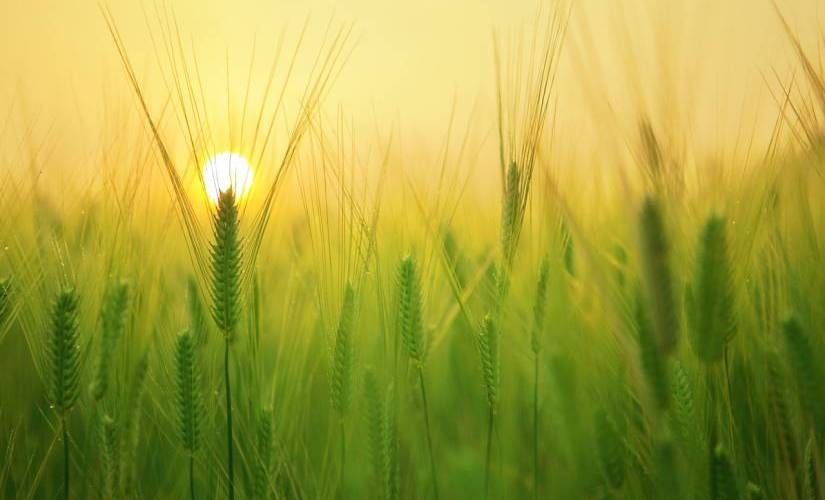How Blockchain and IoT are Improving the Food Supply Chain
How Blockchain and IoT are Improving the Food Supply Chain

The world’s top blockchain and Internet of Things (IoT) minds are working with the agricultural industry to find ways to improve our overstrained agricultural supply chain. They are trying to make it more efficient, transparent, and safe.
Why Are There Problems With Our Food Chain?
Consumers have become more demanding over the last decades. We expect our food to be available regardless of the season. And tastes have become more exotic than ever before. While most of us love the fact we can get tomatoes in winter, most consumers don’t see the hidden costs.
Businesses have been forced to source food from further afield than ever before. This has led to supply chains that span the globe. Around 14% of all food is wasted before it even reaches store shelves. And the average direct cost of a single product recall is around $ 10 million.
Aside from these direct costs, it’s becoming more challenging for businesses to maintain their brand promises. Opaque supply chains and high profile scandals, such as Uncle Ben’s rice recall due to concerns about glass’s possible presence, have damaged consumer trust. And more than 75% of consumers would prefer to switch to brands that provide more in-depth information about a product.
There are primarily two issues with reducing and reacting to food safety problems: poor communication and lack of traceability. Many companies rely on traditional paper-based tracking mechanisms, which are slow and error-prone. To make matters worse, those involved in various stages of the supply chain often don’t communicate with each other. This leaves blind spots in the supply chain.
These problems have always been present but have been exacerbated by the increasing size and complexity of supply chains. As we continue to source more of our food from further afield, we will likely see more problems appear. If businesses want to prevent this, they need to act now, before the problem spins out of control.
How Can Blockchain and IoT Help?
There is no silver bullet to solve the problems facing the food industry. But the potent combination of blockchain and IoT technology could help tackle the root causes. To understand how these technologies can work together, it’s important to understand each’s strengths and limitations.
Harvesting Data With the Internet of Things
You might not know it, but you probably already take advantage of IoT products. If you have a smart thermometer, speaker system, or TV, you’re already part of the IoT phenomenon. But the true potential of IoT lies in its ability to harvest data in real-time automatically and then share that data.
IoT devices rely upon various sensors. These can monitor everything from shipping time to temperature to even which agent handled the food and when. These sensors can be anything from drones to smart thermometers to radio-frequency identification (RFID) and GPS. They help remove human error from each point on the supply chain.
The key advantage of this is that it enables companies to collect data in real-time without requiring human input. This cuts down on potential errors and theoretically will remove many of the failure points in the supply chain.
The trouble is that IoT alone can’t fully solve the transparency and communication problems that plague food supply chains. That’s where blockchain comes in.
Providing Immutability With Blockchain Technology
You’ve probably heard of Bitcoin and Ethereum, but you might not realize that the blockchain technology they are based on has significant applications outside of cryptocurrencies. In fact, blockchain was around for decades before the first cryptocurrency.
Regardless of its use, blockchain’s power is that it creates an immutable ledger that cannot be altered or tampered with after the fact. This feature makes it uniquely suited for storing and displaying data that is both transparent and unchangeable.
Another advantage of blockchain is that it forces companies to clean-up and systematize their existing data. It has been estimated that 75% of the work that goes into implementing blockchain is spent fixing the data to work in the new system. This enables companies to improve their overall processes while making historical data more accurate and useful.
As an example of this process in action, let’s say that you want to purchase organic breakfast cereal. You are relying upon the fact that the manufacturer says that it is organic. But depending upon the supply chain, the manufacturer may be in the same situation: accepting their direct suppliers’ word. And so on.
With a blockchain solution, you would be able to use the unique hash code to track every single step of the production process. This ensures that you know your cereal is what it says on the packet, without worrying that anyone in the supply chain messed up.
IoT and Blockchain Could Transform the Food Industry
Combined, these two technologies have the potential to save the food industry more than $ 31 billion over the next five years. This is primarily due to savings from combating food fraud (e.g., improperly selling chicken as Animal Welfare Approved), but there are other advantages.
Better sensors would reduce food wastage, increasing the total amount of food that hits store shelves. Fewer, smaller, and cheaper recalls would also generate savings.
Agricultural blockchain/IoT tech is still in its infancy, but there are several ways that it can be implemented.
Improving Crop Efficiency
The first step is to leverage IoT smart devices to help understand the output of a specific farm. These devices can use crop sensors to measure the temperature, pH, light, humidity, and soil moisture. Drones can be used to capture real-time data about crop health and to alert farmers to potential problems in their fields.
This alone is helpful, as it enables farmers to make smarter decisions in real-time. But when you add blockchain, it becomes a game-changer. Once the data has been successfully structured, it can be fed into a blockchain solution. In addition to this direct use of data, it can be improved further with machine learning.
These AI-generated insights can be saved onto the blockchain so that other stakeholders can access the information without violating any individual farmer’s privacy.
More Transparent Supply Chains
The next major challenge is shining a light on existing supply lines. Food supply tracking is disturbingly opaque, and it is difficult for consumers to make informed decisions. The first step to fixing this is IoT technology.
Sensors can be used to track where an animal was raised, or a crop was grown and whether the conditions comply with organic and cruelty-free labels. Then IoT-enabled vehicles will transport the products for processing. The temperature the goods are kept at and who has interacted with them will be recorded and stored on the blockchain throughout the entire process.
This enables retailers to keep track of when produce will arrive but more importantly, it provides transparency to consumers. It should be possible to use a QR code and see a product’s entire life cycle before you buy it.
Other Uses
The beauty of IoT and blockchain technology is that they are incredibly flexible. Farmers can use them to share weather data and help mitigate climate change effects, or environmental campaigners can use it to verify that food is actually meeting quality standards.
The key is that the combination of IoT and blockchain will help cut costs and improve the quality of the food we eat. The best part is that the use cases mentioned above are far from just theoretical. Several companies are already implementing blockchain technology in the real world.
Current Uses of Blockchain and IoT Technologies
Many projects are working towards a blockchain-powered agricultural sector. Some of these projects are tightly focused — designed to tackle a single problem very well. Others are more ambitious, seeking to tackle problems facing the whole food industry.
Tracking Sustainable Foods With the WWF-Australia’s OpenSC Project
The World Wildlife Fund-Australia (WWF-Australia) is interested in tracking and improving our food logistics. The organization has partnered with BCG Digital Ventures to build OpenSC. The OpenSC project is focused on transparency that leverages blockchain and IoT tech to help people avoid illegal or environmentally damaging products.
A primary example consists of the fishing industry. A ship leverages IoT tech to record the exact location a fish is caught. This fish is then tracked through the entire supply chain. Once it hits store shelves, a customer can use their smartphone to scan the QR code on the product and confirm that the fish they are buying is what appears to be and has come from a sustainable source.
But the project is bigger than that. For example, OpenSC has already begun collaboration with Nestlé to trace milk from farms and producers in New Zealand to factories in the Middle East. The company wants to use this to help further its commitment to transparency.
The OpenSC project raised $ 4 million in funding in 2019 and could become a proof-of-concept for the entire agricultural sector.
Boombloc and the Malaysian Palm Oil Council
Palm oil has become one of the most controversial products in recent years. Large illegal palm oil operations have caused significant environmental damage. The Malaysian Palm Oil Council (MPOC) has partnered with Boombloc to restore some credibility to the sector, which is a vital source of income for Malaysian farmers.
The project uses smartphones to upload information about individual trees to a database. This allows a detailed ledger to be built. Users can then track the lifecycle of that tree and the origin of any palm oil they purchase. The MPOC hopes that this will help allay any fears about illicit palm oil operations’ environmental impact.
IBM Food Trust
The IBM Food Trust is by far the most influential agricultural blockchain project. It is based on the Hyperledger Fabric blockchain protocol. This modular blockchain framework is rapidly becoming the de facto standard for many enterprise blockchain platforms. The project is open source and designed with business users in mind.
The Food Trust is designed to connect various participants across the food supply chain through a permissioned, permanent, and shared data record. The project leverages a suite of tools designed to make it easier for companies to implement blockchain protocols. And it appears to be working.
For example, Nestlé and Carrefour have collaborated to use the platform for the GUIGOZ Bio 2 and 3 infant milk range. They are using the technology to track the product from “milk to shelf.”
The Sustainable Shrimp Partnership (SSP) has also worked with the IBM Food Trust to provide a platform where its product’s data can be looked up. Both these projects aim to help improve transparency and allow consumers to confirm that these products are meeting the standards they claim to.
The Dawn of a New Era in Food Tracking
The food industry’s problems are genuine and will only worsen if the global supply chains don’t adapt. This is why it is essential for food companies, particularly those involved in logistics, to look into IoT and blockchain technology today. Around 20% of grocers are already considering implementing the technology by 2025. As technologies become more accessible, this number is likely to grow.
The post How Blockchain and IoT are Improving the Food Supply Chain appeared first on ReadWrite.
(25)


